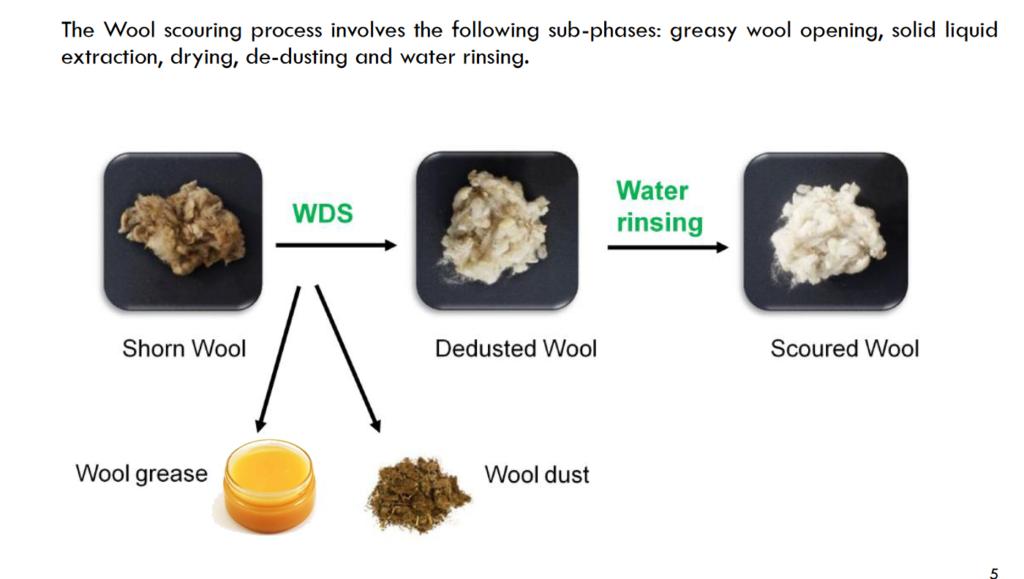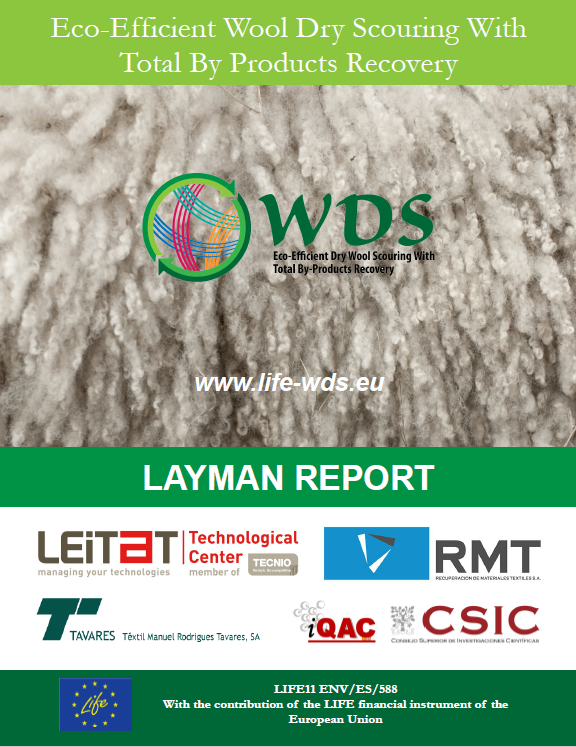The Wool Dry Scouring Process simply explained
The merino wool contains around 50% grease and dirt. This is usually discharged as an emulsion in waste water during scouring. Wool Water Scouring rejects large quantities of wastewater. The treatments of these highly pollutant wool scour effluents are expensive and require high capital and operating costs. Furthermore, they are low-efficient and consequently, the treated effluents are problematic.
Most European wool scourers could not afford the costs of the waste water treatments required by these wool scouring effluents to accomplish with the discharge limits to rivers or public sewers. Wool scourers did not have other viable alternatives to scour wool and they closed progressively. As a consequence, most European wool traders cannot find wool scouring companies at local level and they sell the greasy wool to other countries were is scoured. The greasy wool is scoured in countries where the scouring costs are lower due to a less strict environmental legislation.
When greasy wool is degreased with solvent and over-dried, it liberates easily the non-fibre material as a fine dust. Taking advantage of this fact, the Wool Dry Scouring (WDS) achieve:
- The full recovery of wool grease (lanoline)
- The recovery of suint, dirt and vegetable matter directly as a solid material (wool dust)
The WDS project focuses on demonstrating a new technology to scour wool using solvent in order to replace the conventional water scouring and make the process technically and economically feasible in Europe. The major challenge lies in the extraction of the grease with solvents. A new solvent scouring process is required to overcome the issues that arose from previous historical approaches: loss of whiteness and softness in wool, non-soluble solids effluent containing both dirt and solvent, low yield of lanoline recovery, solvent emissions, and difficulties in recovering the solvent imbibed in wool fibre. The previous approaches tried to replicate the water scouring system using solvent instead of water (bowls, rolling press, convective drying, etc.)
Click here to download the full document in English and here for Spanish.


